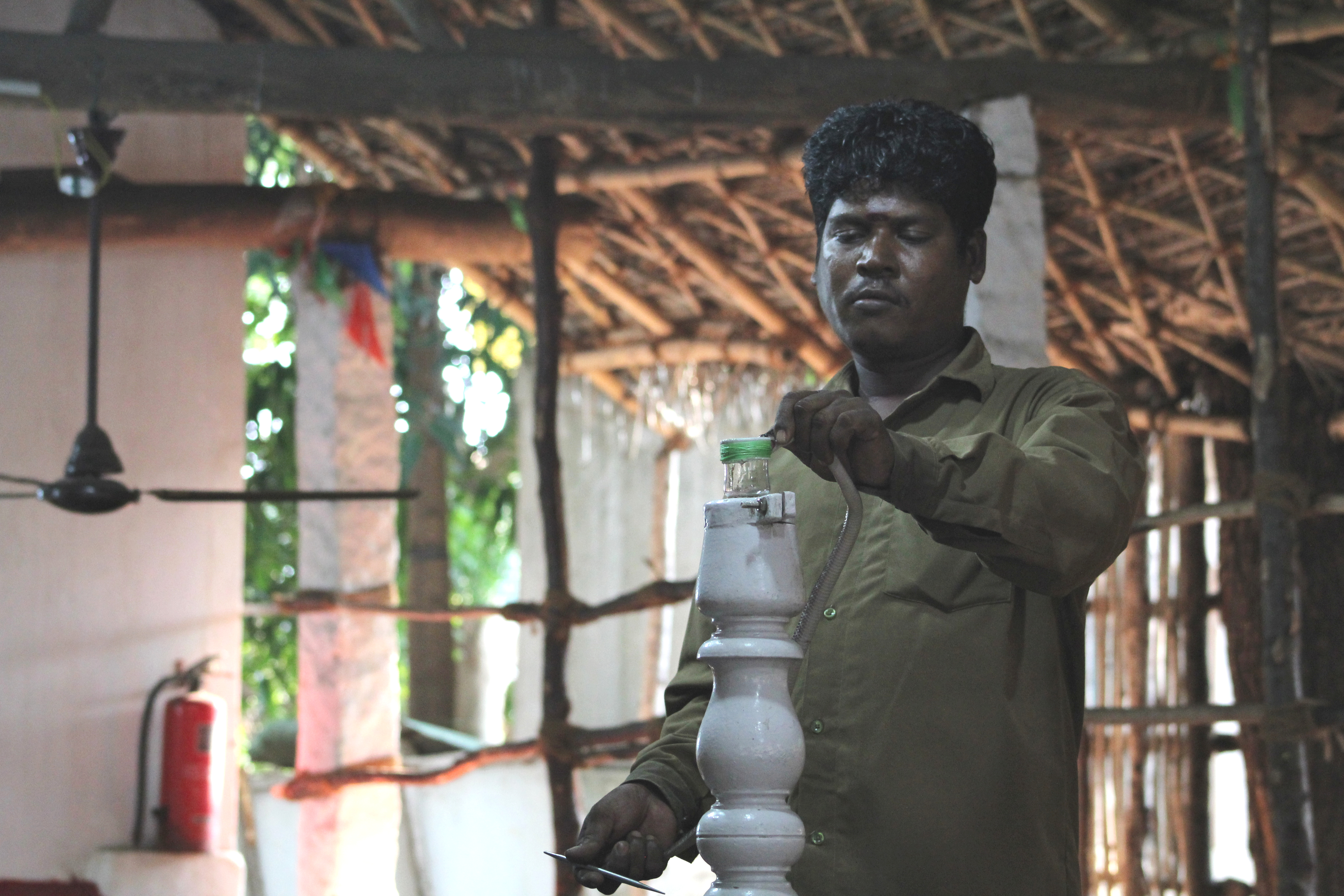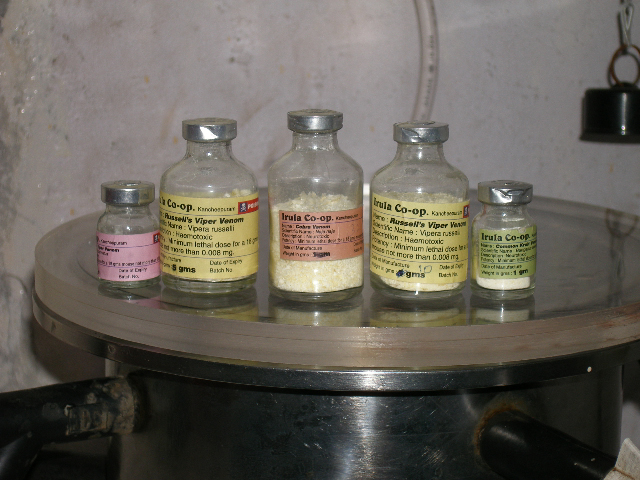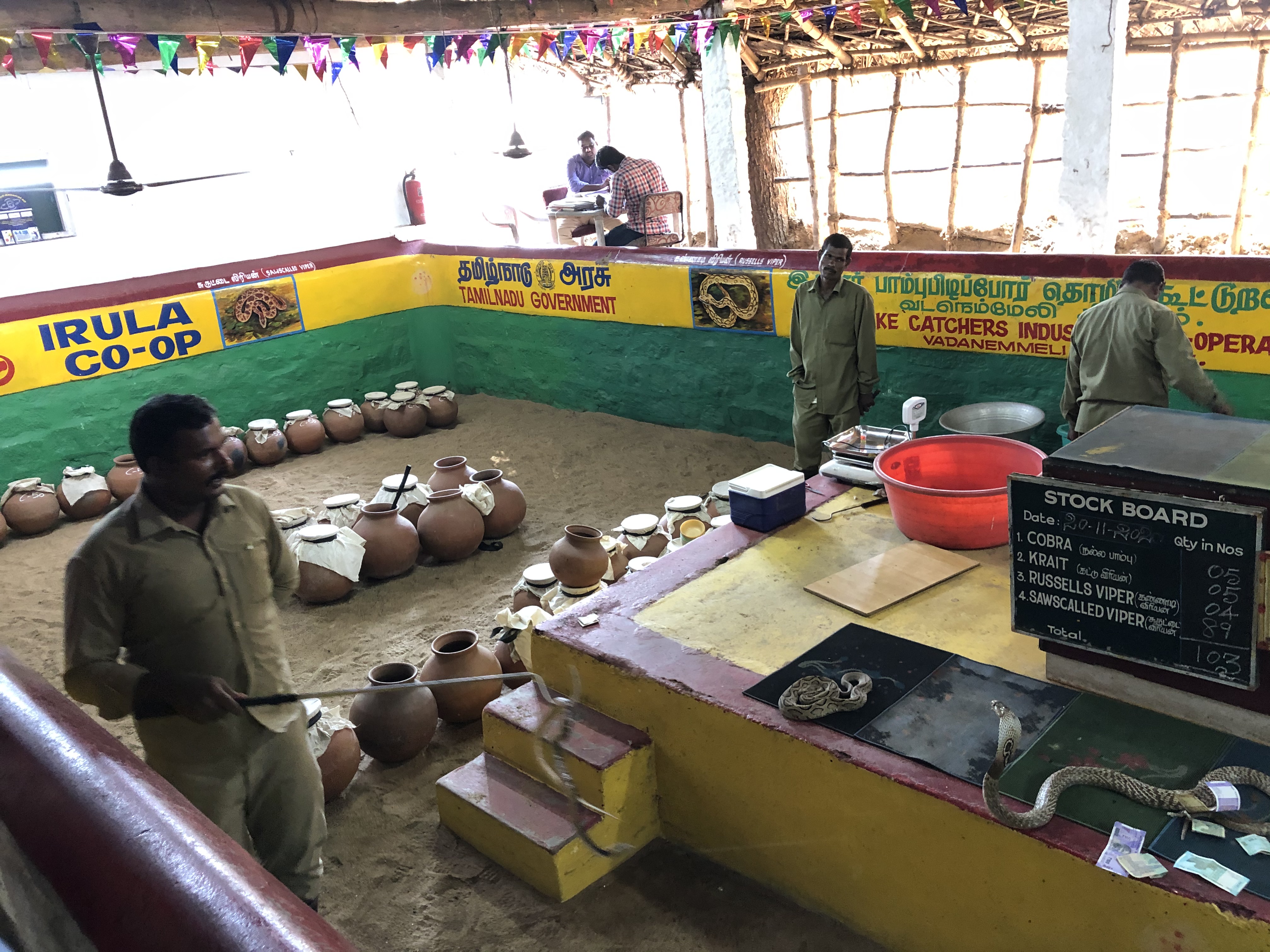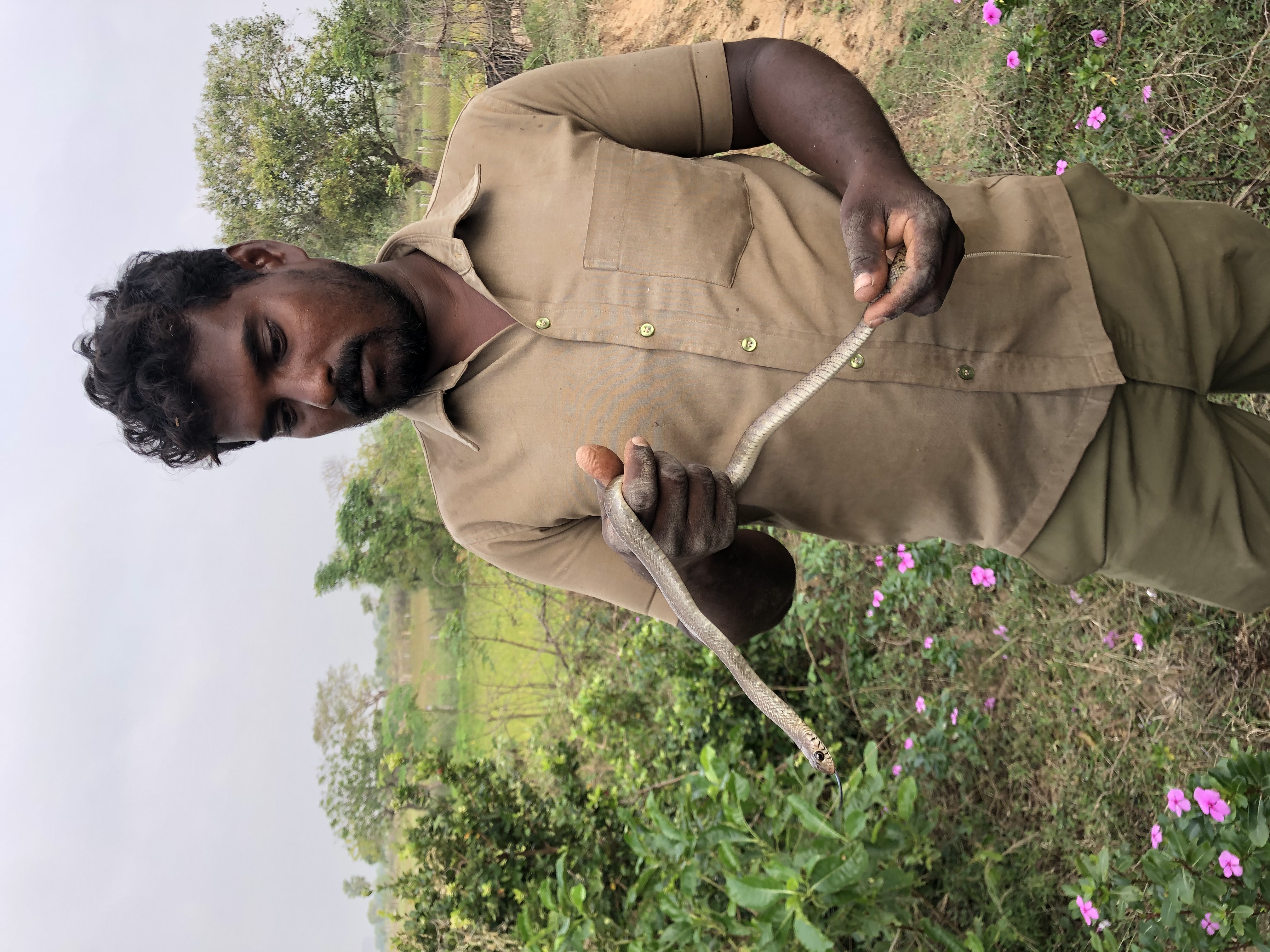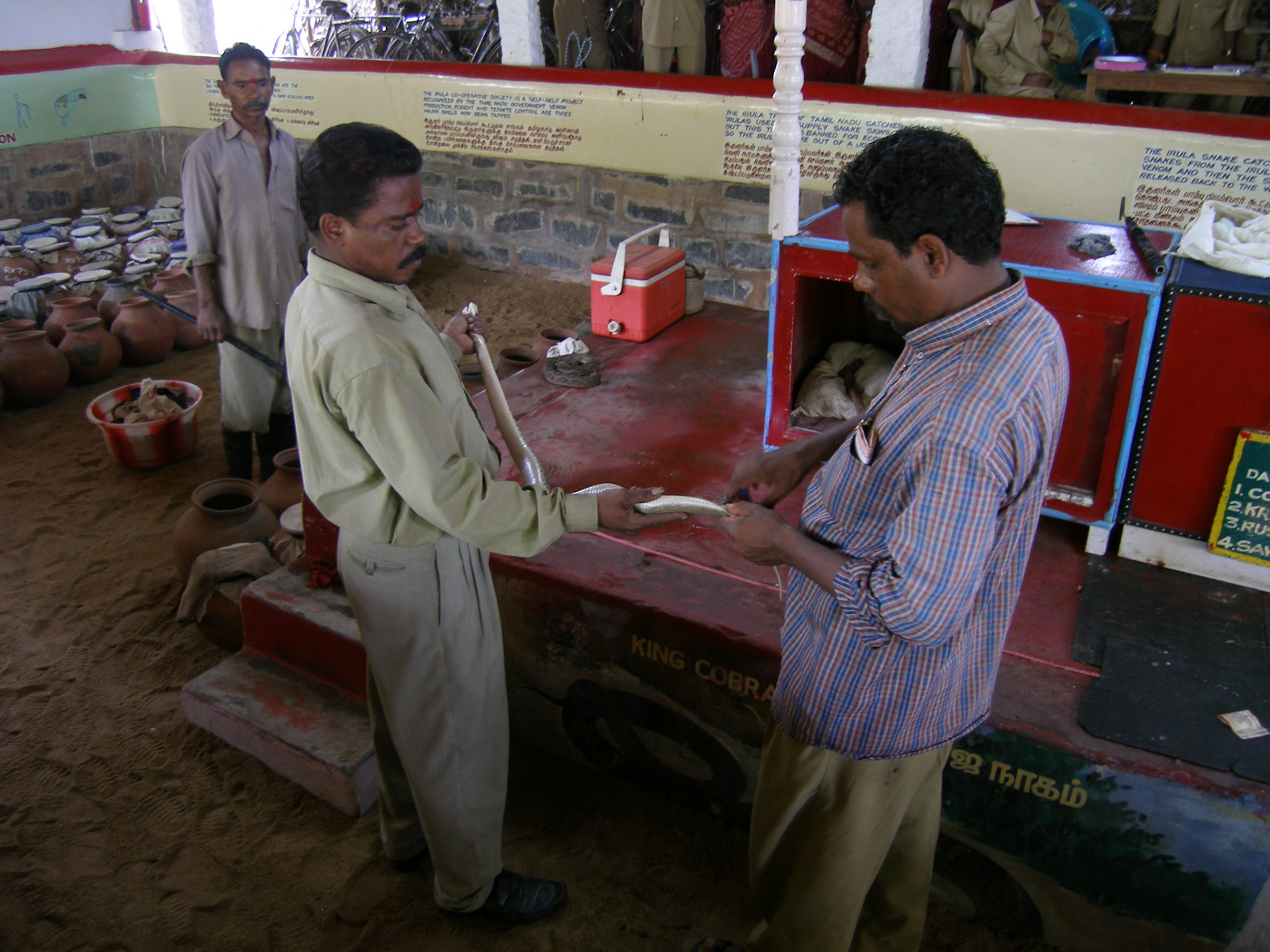The Irular
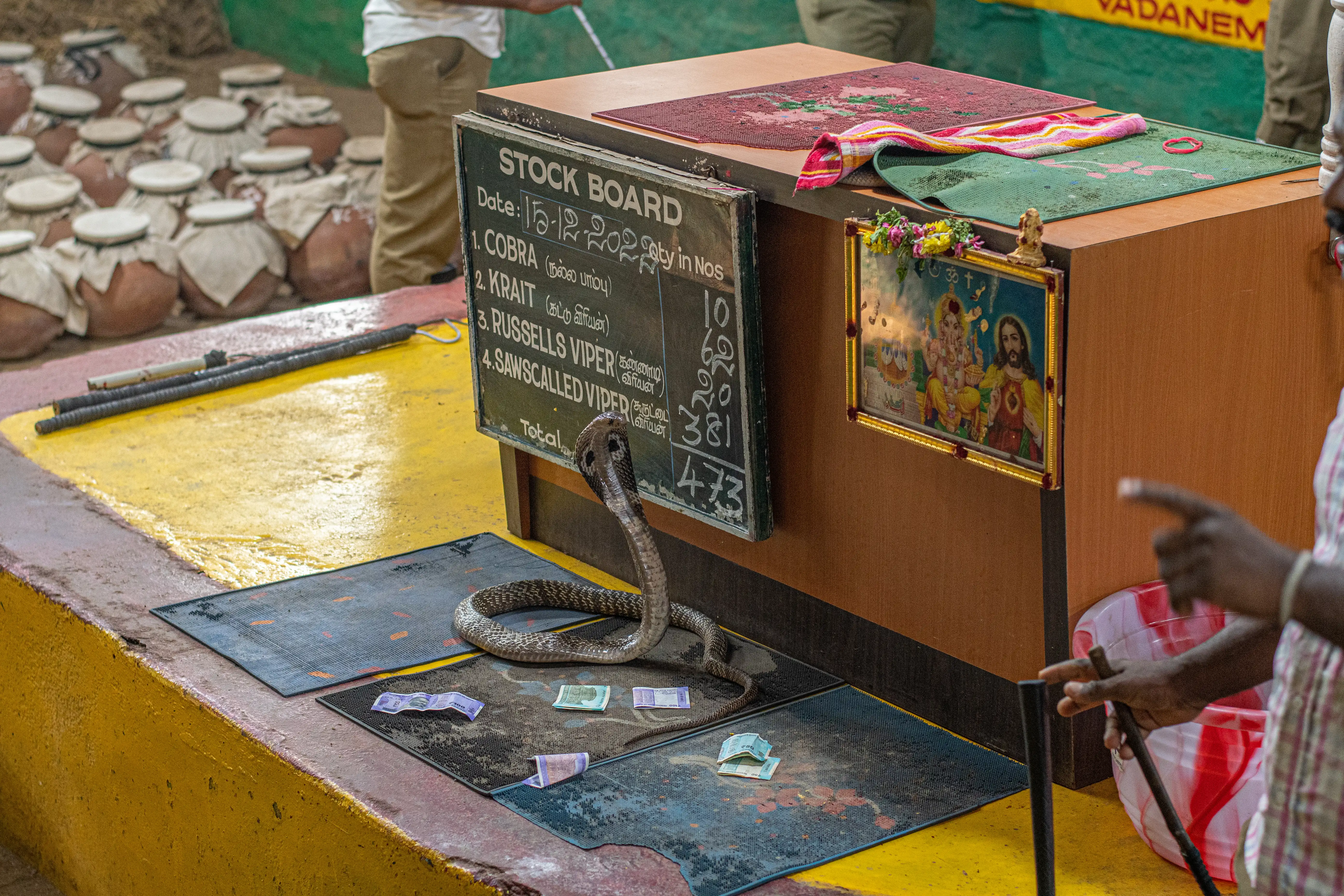
INTRODUCTION:
The Irular are one of the last forest scientists of the
world. Their knowledge and use of herbal medicines, tracking and digging skills, and
unusual diet (which includes rats) has been written about, filmed, studied and lauded.
During the pre-monsoon season when termites leave their mounds and swarm, Irular use a
special seed to simulate the smell of rain, catching bagfulls of this winged protein and
eating it raw or roasted. But their most famous hunting feat is that of tracking and
catching snakes. From an (to us) invisible scrape on the ground, the Irular hunter knows
the species, size, and travel direction.
This skill was put to good use during the snake skin export years, which peaked between
the 1950s and 60s. Literally millions of snake skins were exported from India and the
Irular were the main suppliers in the south. Then, with the passing of the Wildlife
(Protection) Act of 1972, the snake skin trade was banned resulting in a drastic impact
on the livelihood of this Adivasi group. Simultaneously, forest access and food
gathering/hunting was becoming more and more difficult, as their traditional hunting
areas came under varied categories of protection such as Reserved Forest, Sanctuaries,
National Parks….or were invaded by burgeoning cities and towns.
IRULAR SNAKE CATCHERS’ INDUSTRIAL COOPERATIVE SOCIETY
(ISCICS):
In the meantime, naturalist Rom Whitaker and others had been
studying the incidence of snakebite in India, and discovered that thousands of lives
were lost because of the inadequate production and distribution of antivenom serum.
Irular snake catchers in the Chinglepet area were mobilized to form a Snake-Catchers’
Cooperative where, under licenses from the Wildlife Department, they supply snakes,
extract and freeze-dry venom, and sell this to antivenom producing laboratories such as
Haffkine Insitute. The snakes are released back into the wild after three extractions.
This is a pioneer project in the area of sustainable resource use, and funding and
awards enabled expansion and development. It continues to function till today, within
the campus of the Crocodile Bank.
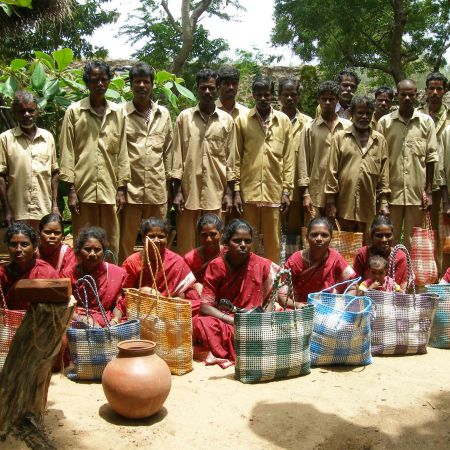
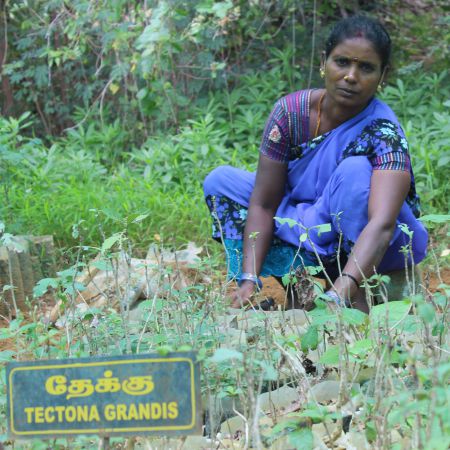
IRULAR TRIBE WOMEN’S WELFARE SOCIETY (ITWWS):
In 1986, it was decided to start a sister project for Irular
women and girls, again with the community in leadership roles. The objectives included
documentation and marketing of herbal/medicinal knowledge, livelihood development,
afforestation including forest nurseries, and social and economic empowerment. ITWWS’
achievements include:
A twelve acre forested campus with residential and office buildings, thanks to funding from Womankind Worldwide, Oxfam, Action Aid and others.Creation of effective leaders among Irular women, through awareness workshops and training programmes.The first generation of (22) Irular college students, is bravely facing the social challenges of classroom and hostel life!The Irular projects are an example of how conservation can go hand in hand with social upliftment.
A twelve acre forested campus with residential and office buildings, thanks to funding from Womankind Worldwide, Oxfam, Action Aid and others.Creation of effective leaders among Irular women, through awareness workshops and training programmes.The first generation of (22) Irular college students, is bravely facing the social challenges of classroom and hostel life!The Irular projects are an example of how conservation can go hand in hand with social upliftment.

